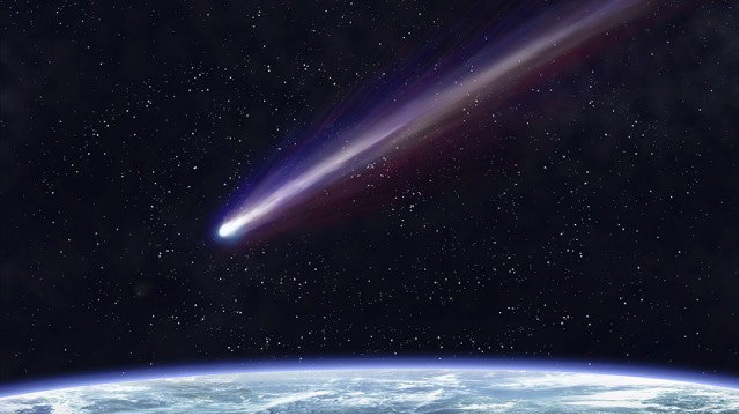
“Why is Space Jockey Reviews headlining meteorites and meteorite detecting?” you ask. Why are we heralding the arrival of stars and otherworldly objects, glorifying their impacts on Earth? “Why isn’t this another “down-to-Earth” movie review, interview or cinema news showcase?” You guessed it! As SJR navigates the stars, we collect them as well. Being “down to Earth,” we love those that hit the Earth the most. Not the big one’s, but the smaller ones that don’t destroy us–those that bring with them, a tangible piece of the otherwise untouchable universe. Within those pieces from the stars is our hope and inspiration for every review we write! Like that of a burning sun, our fuel is cosmic and stellar! As a tribute, the SJR meteorite museum is a who’s who of famous falls and main masses lesser known, from stony chondrites to nickel/irons, classified and unclassified, flight-oriented and tumbling. Included in our collection are specimens from Campo del Cielo, Canyon Diablo, Nantan, Sikhote Alin, our very own NWA 6644 main mass (cataloged and classified in the Universty of Arizona’s Meteoritic Database Bulletin) and many more! Members of Facebook’s “Meteorite Hunters” group we are, as well!
After being contacted by Dmitry Sedov from MG Technology Company, SJR Editor in Chief Chris Rennirt felt compelled, like gravity, to bring the news to Earth! Meteorite hunting just got a lot easier! Rare-Earth magnets, meteorite sticks, and metal detectors are now obsolete. The new MG-200 and MG-400 magnetometers/gradiometers are here, packing more magnetic muscle than ever, at a price more affordable than ever! Yes! It’s news on an intergalactic level, making those iron-laden morsels from beyond easier than ever to find on Earth! For more details, the words of Dmitry himself cannot be outdone, technical and specific as they are:
“We [at MG Technology Company] design and manufacture devices that take meteorite hunting to a different level. As you know, most metal detectors cannot locate objects deeper than two feet. Gradiometers use an entirely different approach to locating meteorites: instead of sending a signal and trying to pick up the reflection from a meteorite, they are simply looking to detect the magnetic field that surrounds all iron or any other magnetized objects. Meteorites are magnetized, and therefore also have a magnetic field that can be detected by gradiometers. Our gradiometers detect meteorites by their magnetic field at depths of up to several meters, depending on their mass: a chunk of iron weighing 3-5 kg (6-10 lbs.) can be detected at 2-3 meters (4-6 ft.); an aircraft bomb weighing 250 kg (approx. 550 lbs.) at 5-6 meters (15-20 ft.); an automobile 1000-1500 kg (2000-3000 lbs.) at 6-12 meters (20-40 ft.). Titanic wreckage was located at a 4000 meter depth with a similar device”
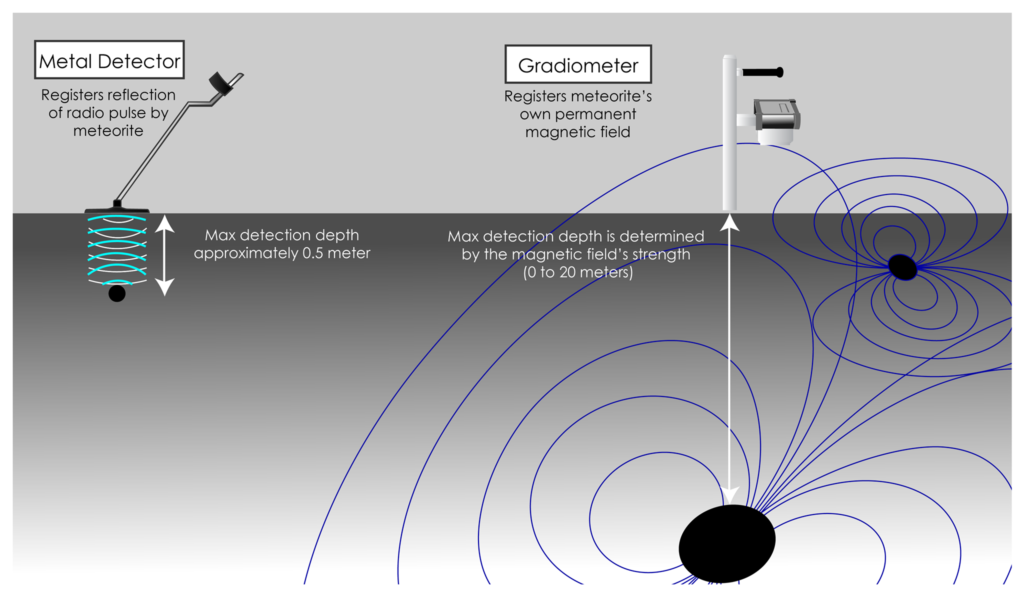
Metal Detector vs. Gradiometer Performance Comparison (Diagram from MG Technology Company – For an enlarged view of the chart, click on the image.)
“Of course, gradiometers can also locate smaller objects but at smaller depths. This allows us to use gradiometers in areas already searched with metal detectors and locate meteorites of medium and large sizes at depths not available to metal detectors. Our gradiometers are compact and convenient in use, carried in one hand, allow movement at any speed, and are small in weight and size: the search and locate gradiometer MG200 weighs only 2.6 kg (5.7 lbs.) and is 60 cm (under 2 ft.) long, and the mapping gradiometer MG400 weighs 5 kg (11 lbs.) and has a sensor bar 1 meter long. (approx. 3 ft.).”
“Gradiometers haven’t been used up to now for meteorite search due to their high cost. (12,000 to 26,000 USD by Bartington, Geoscan, Ferex, Geometrix, etc.) Previously, they were mostly used only by archaeologists and the military. However, we have succeeded in building gradiometers that are much more affordable. A large number of medium and large size meteorites have already been located in the territories of Belarus, Russia, and Ukraine with our gradiometers.”
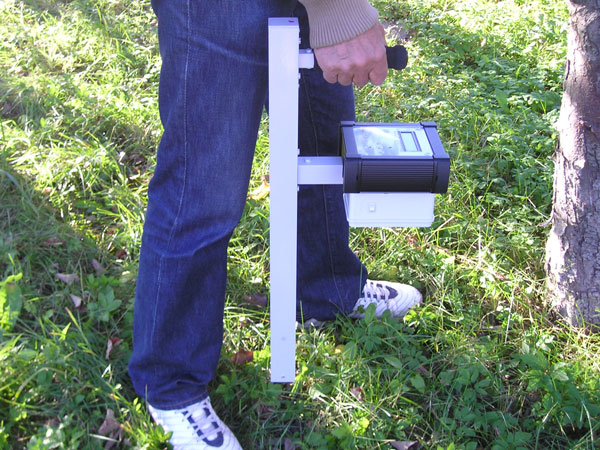
The Magnetometer-Gradiometer MG-200 in use (Photo from MG Technology Company)
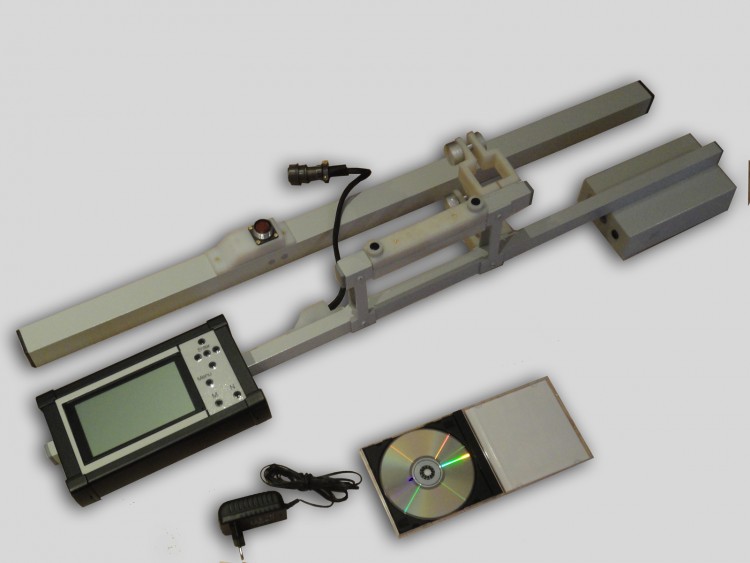
The Magnetometer-Gradiometer MG-400 unassembled (Photo from MG Technology Company)
The units are compact, lightweight, and durable, with aluminum bodies and all digital displays. What’s better is that they operate on standard AA batteries! Operation time is a whopping 25 hours on 4 AA rechargeable batteries and 50 hours on 8. Filtration of metallic trash is easily set up with one button, giving meteorite hunters more time to find what they really want, faster! Yes! Technology once reserved for scientists and military personnel is now available and affordable for the average Space Jockey/meteorite hunter!
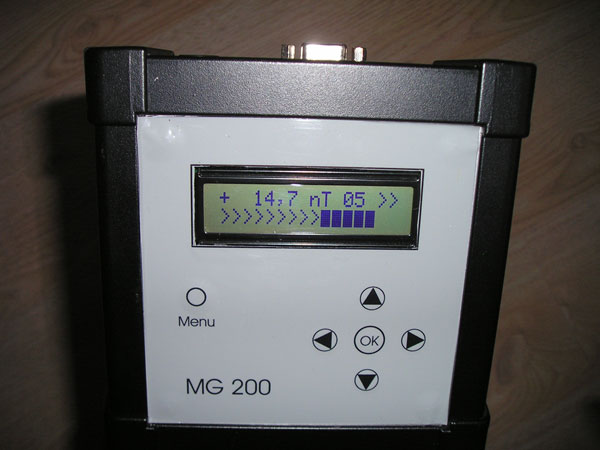
The all-digital display of the MG-200 and MG-400 make them easy to read, and standard AA batteries make them inexpensive to operate! (Photo from MG Technology Company)
SJR has no doubt that “a large number of medium and large size meteorites” are yet to be located in the territories of the United States, as well–not just in the territories of Belarus, Russia, and Ukraine. With a magnetometer/gradiometer from MG Technology Company, a 6-10 lb. meteorite can be detected up to 6 ft. in the ground! Now, you can find meteorites at depths never before possible with standard metal detectors! So, get those shovels ready! Let the meteoritic rush begin! “There’s meteorites in them there hills!”
Look for the SJR meteorite collection, coming soon to the Asteroid Belt, right here on Space Jockey Reviews! “Out of this world,” for sure!
You may also like these!








